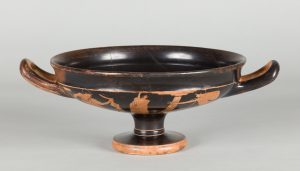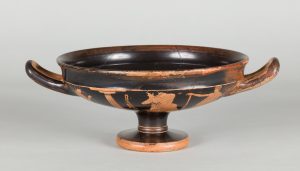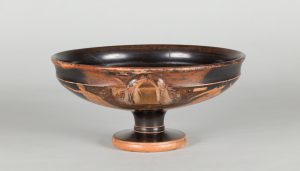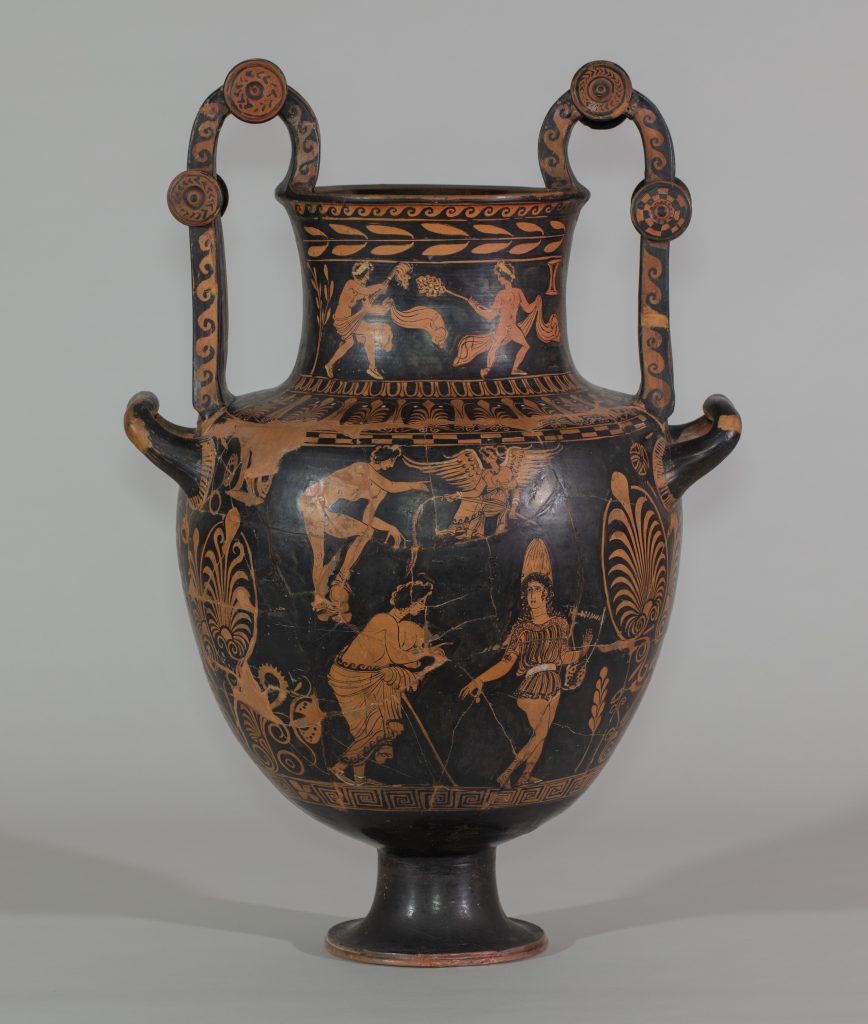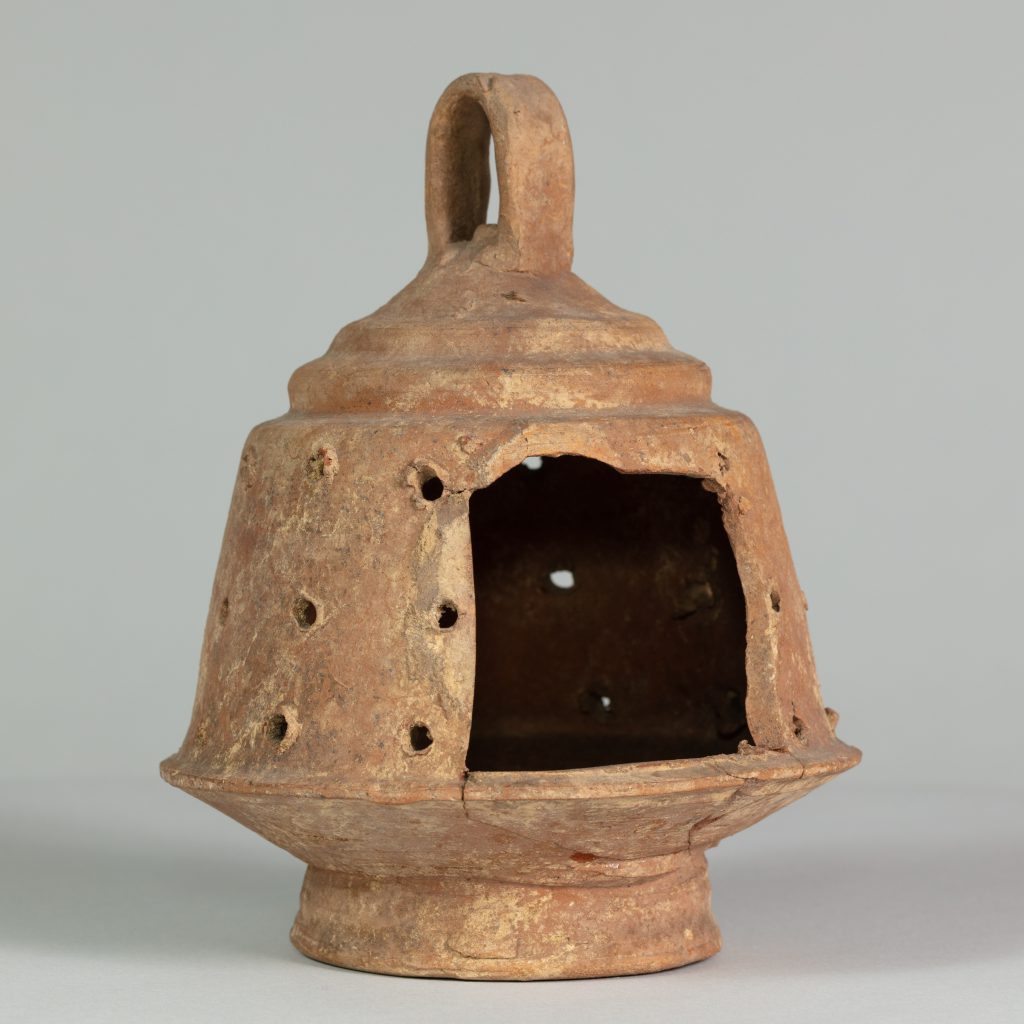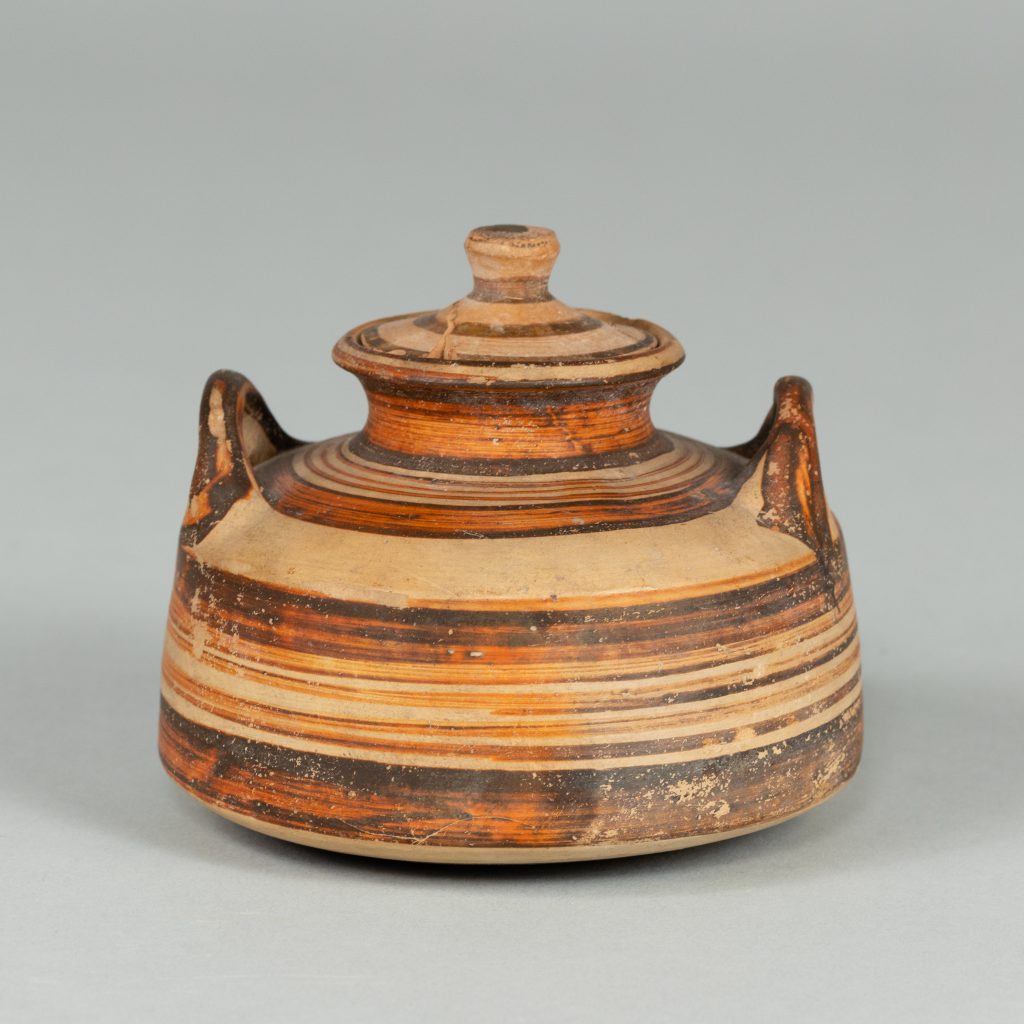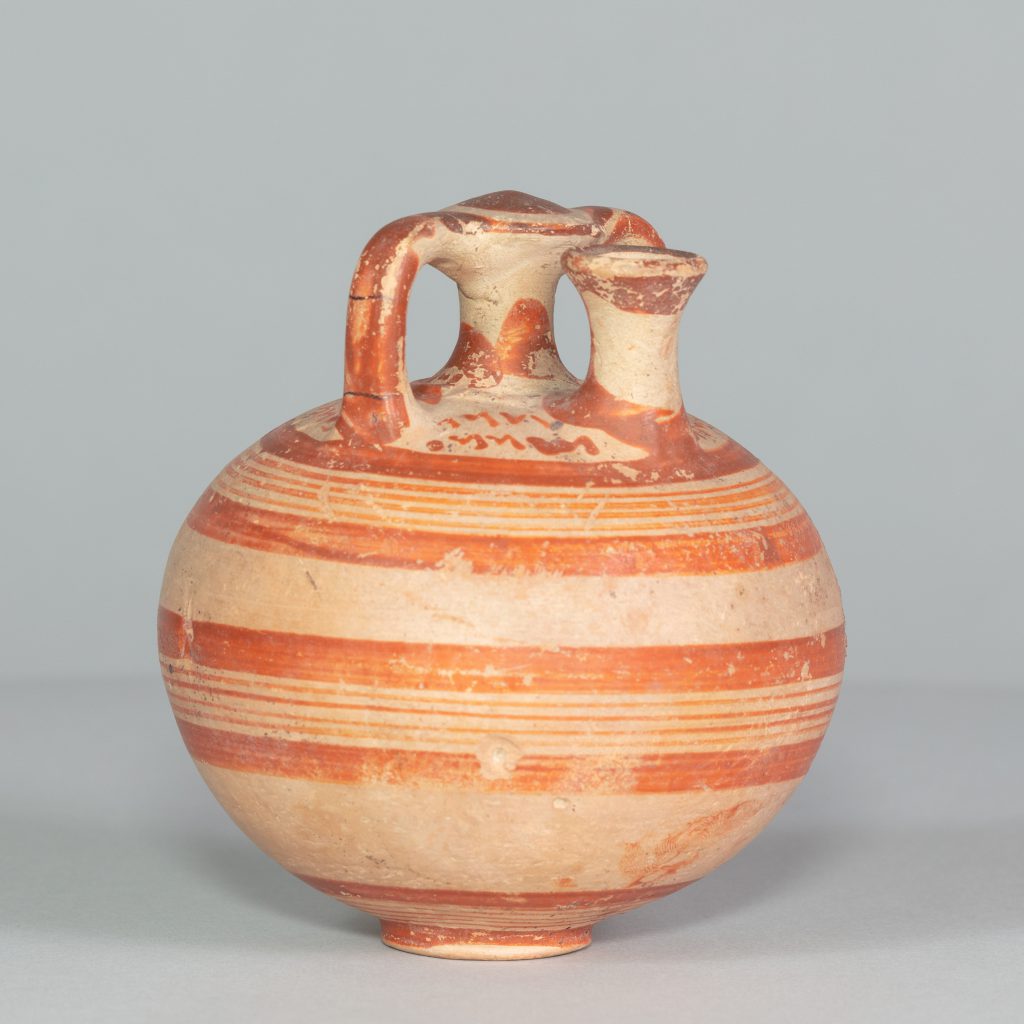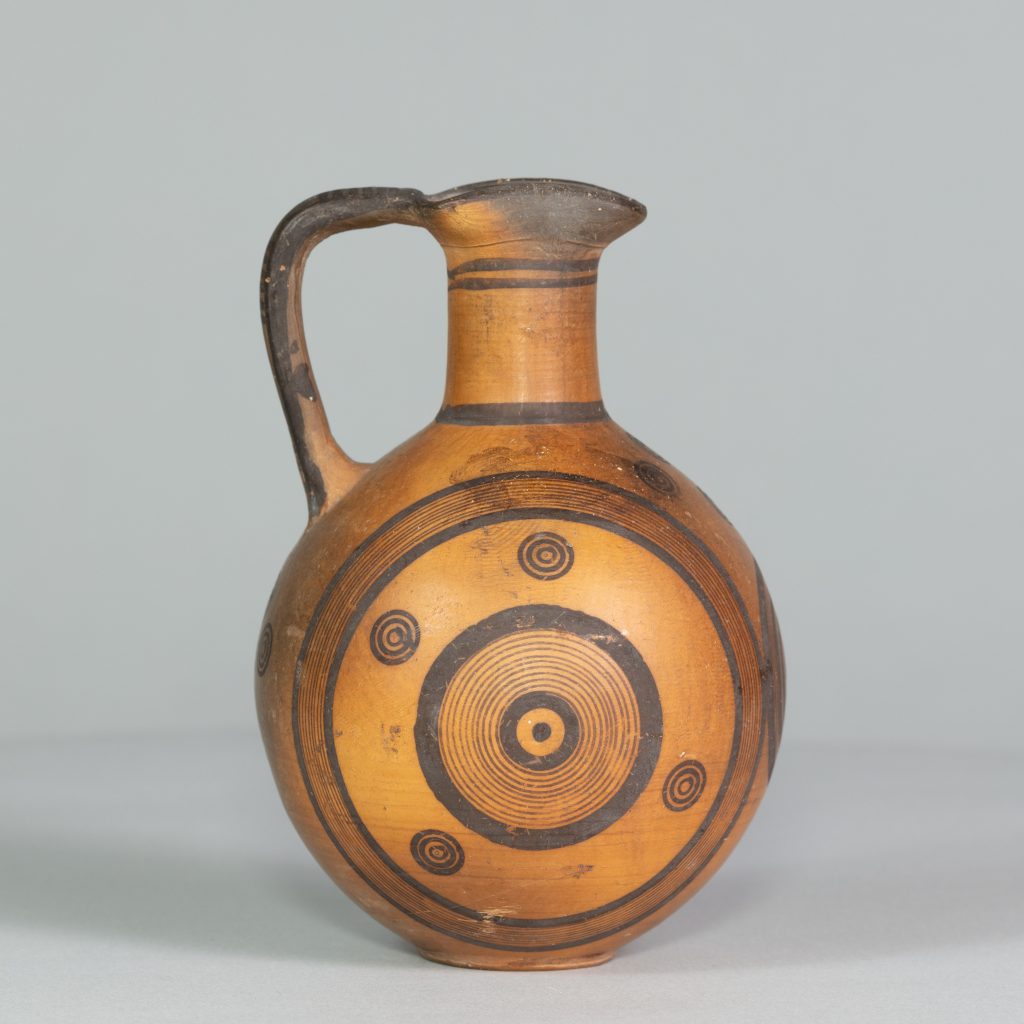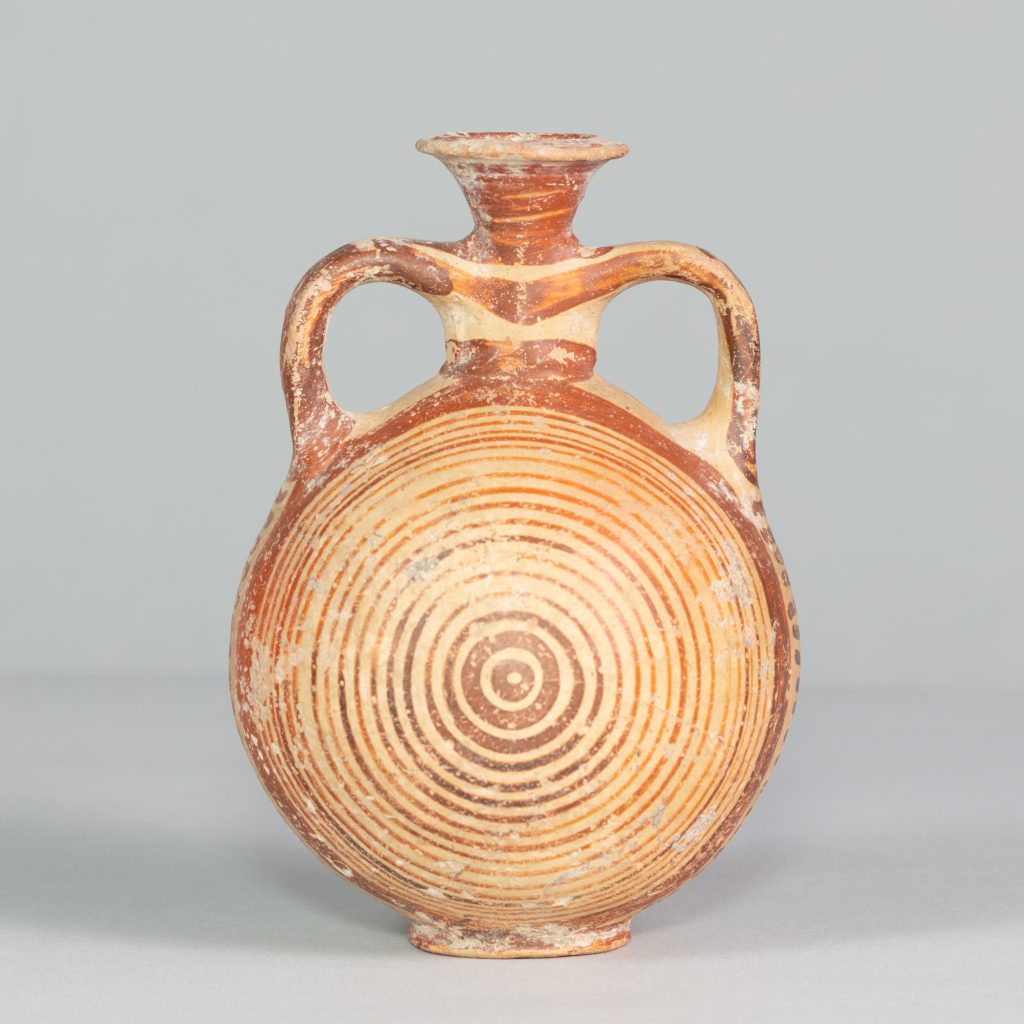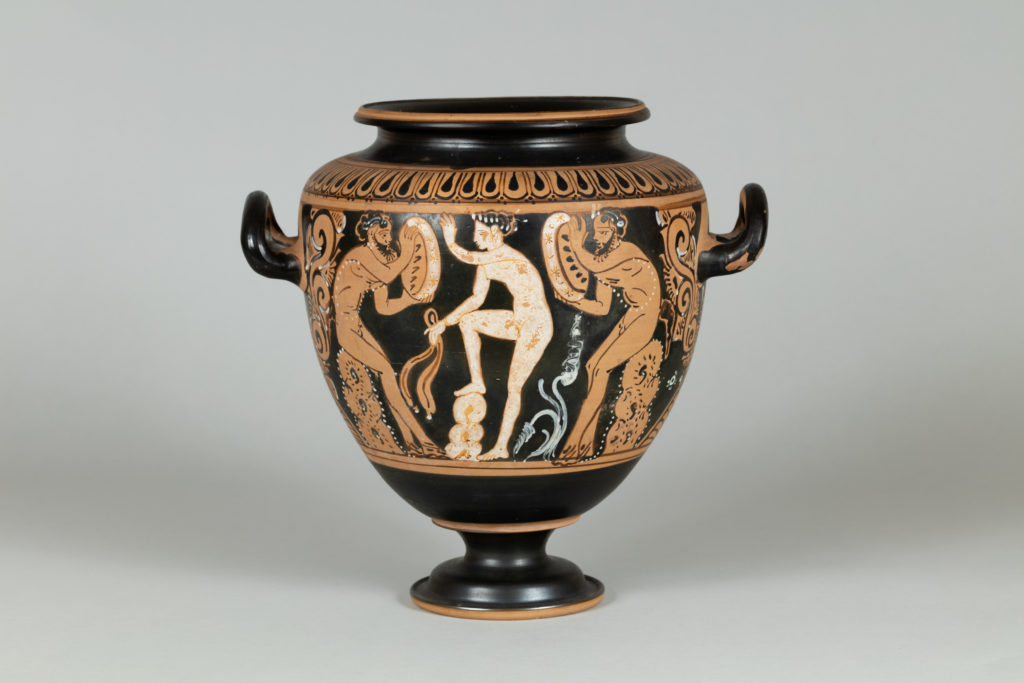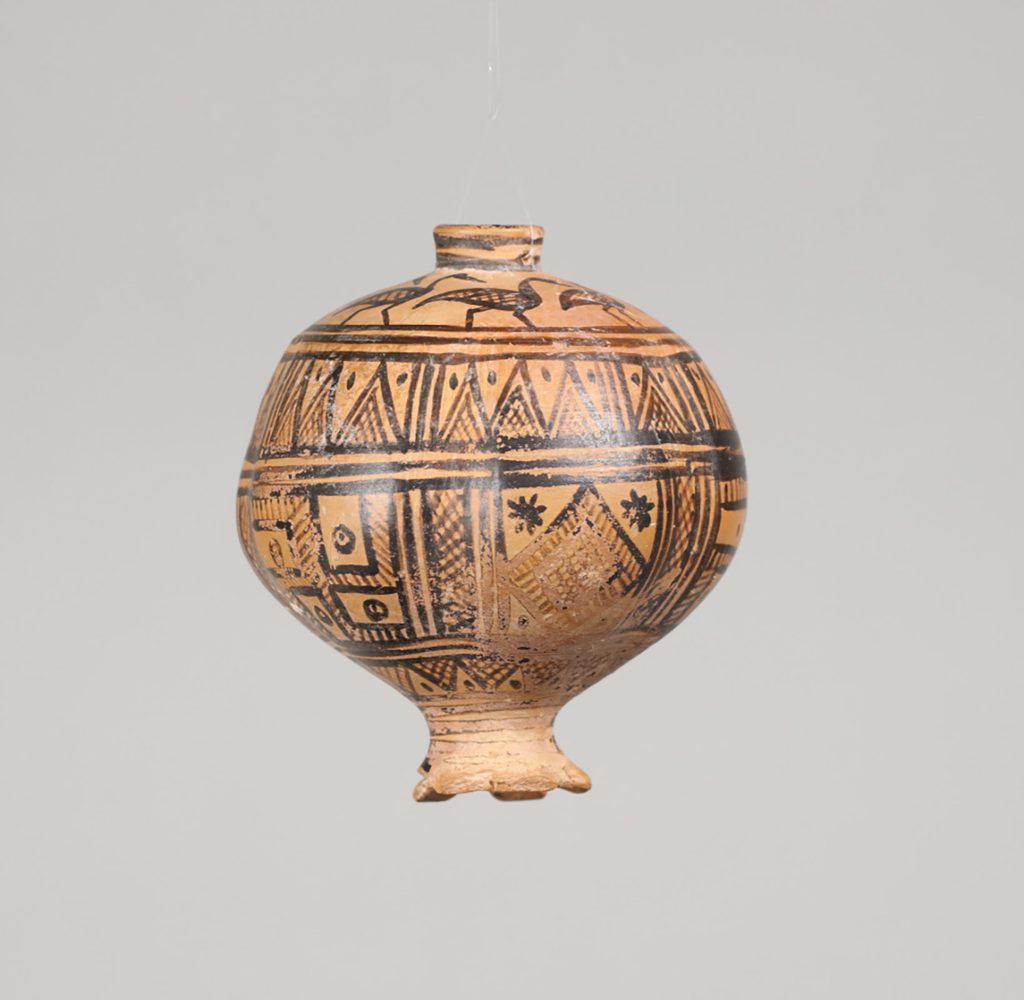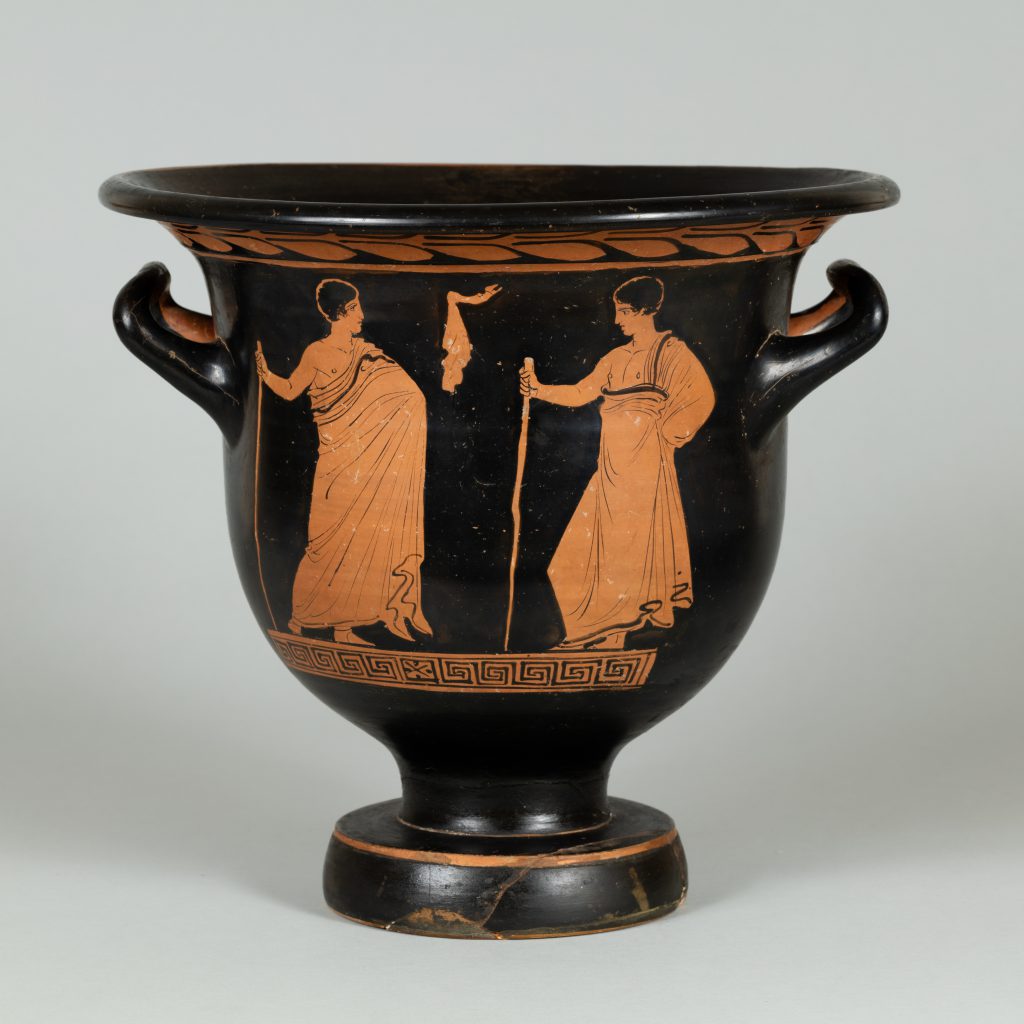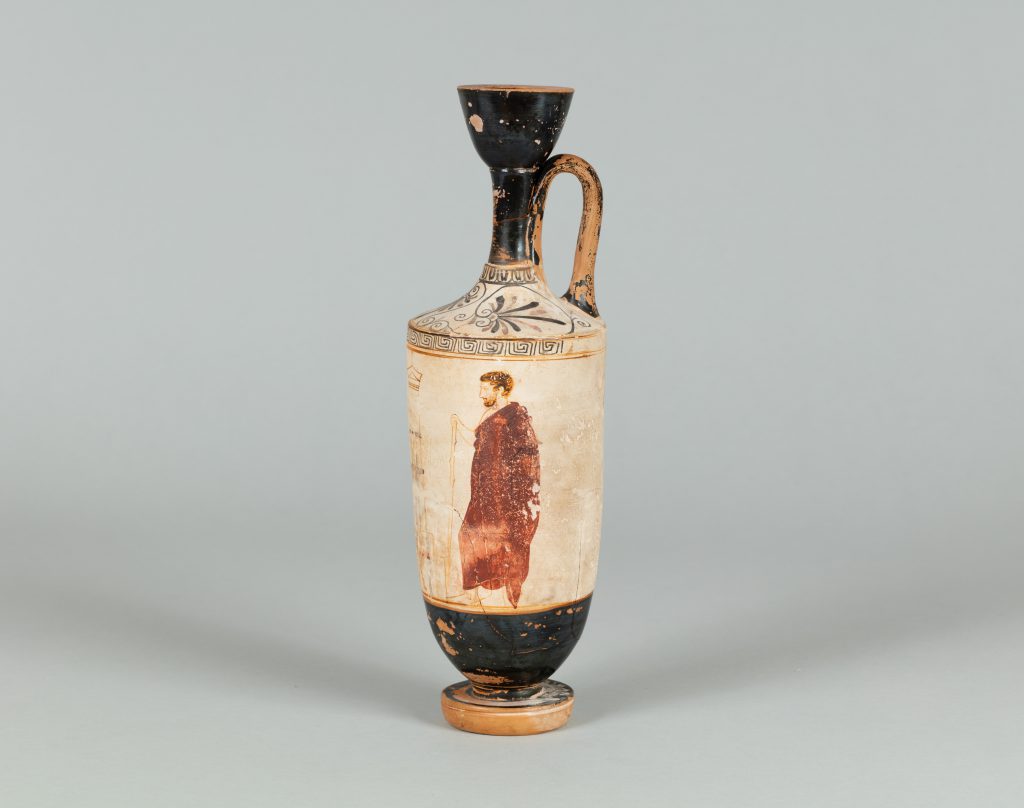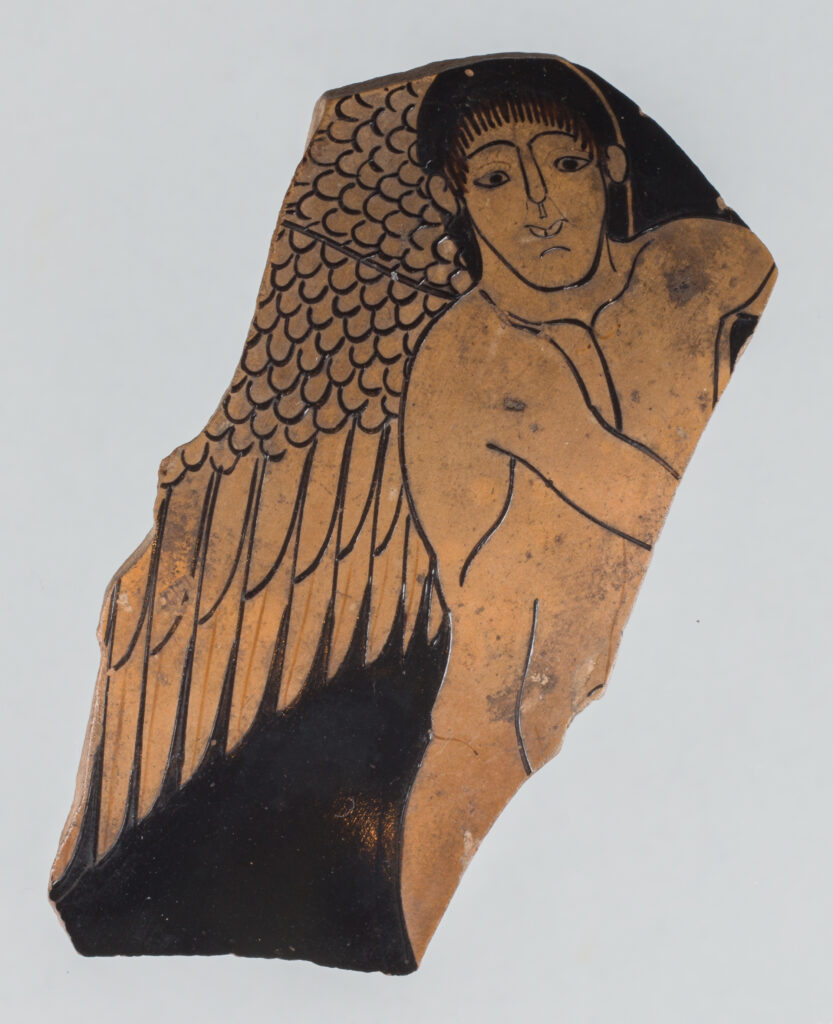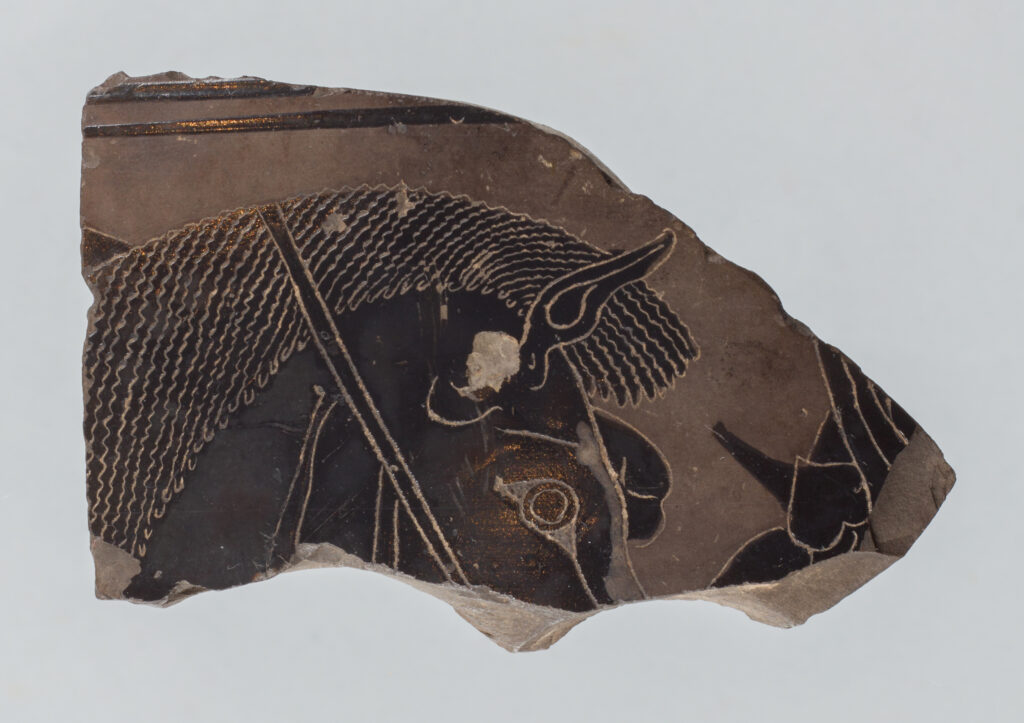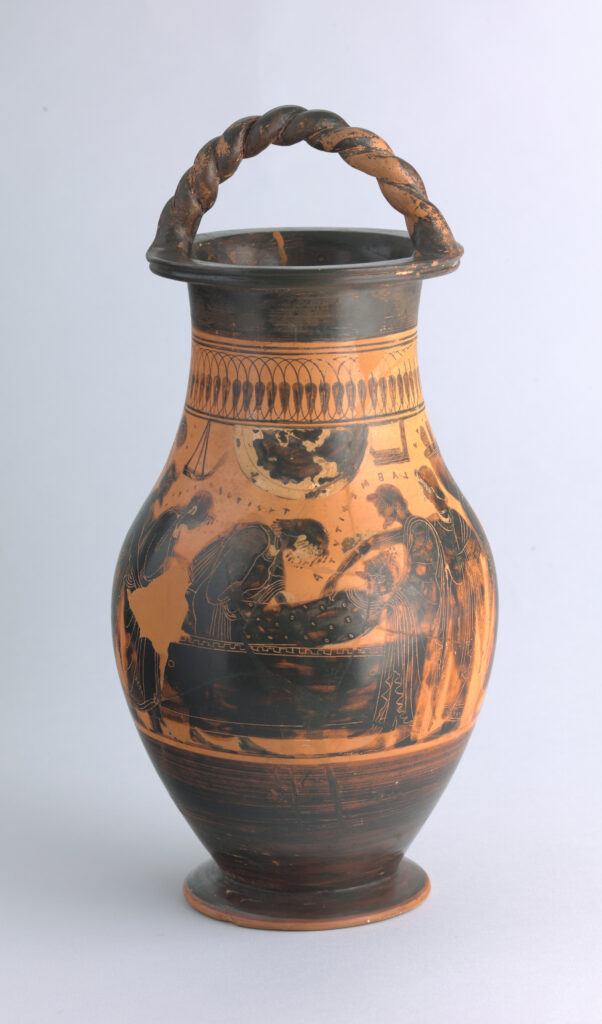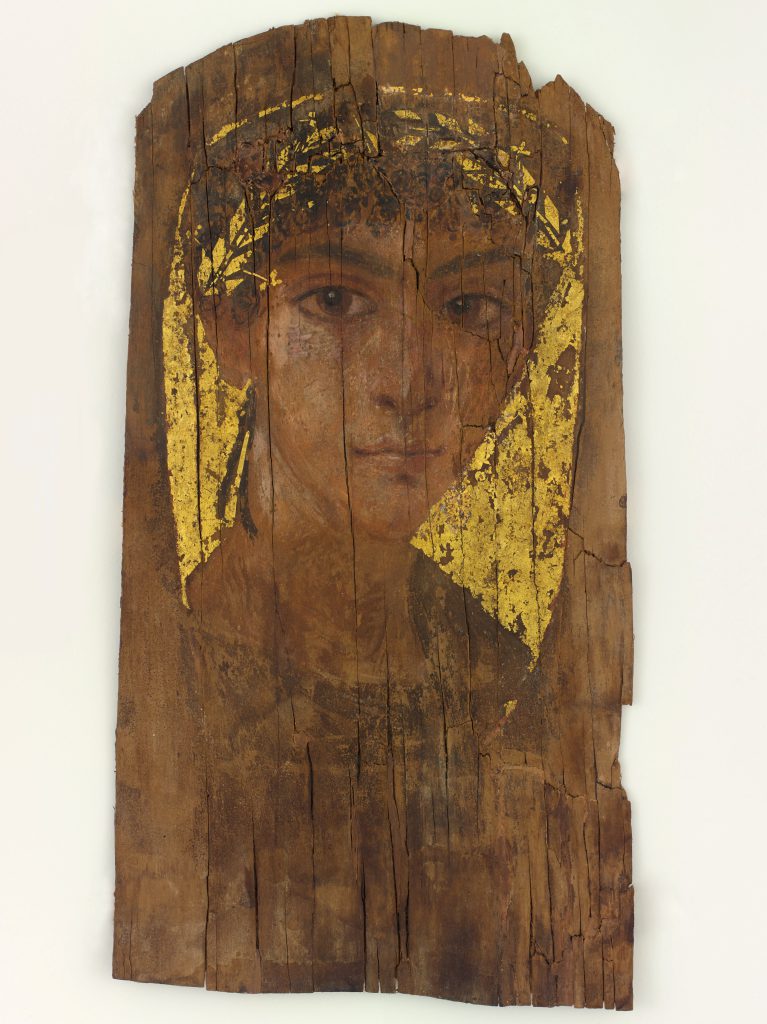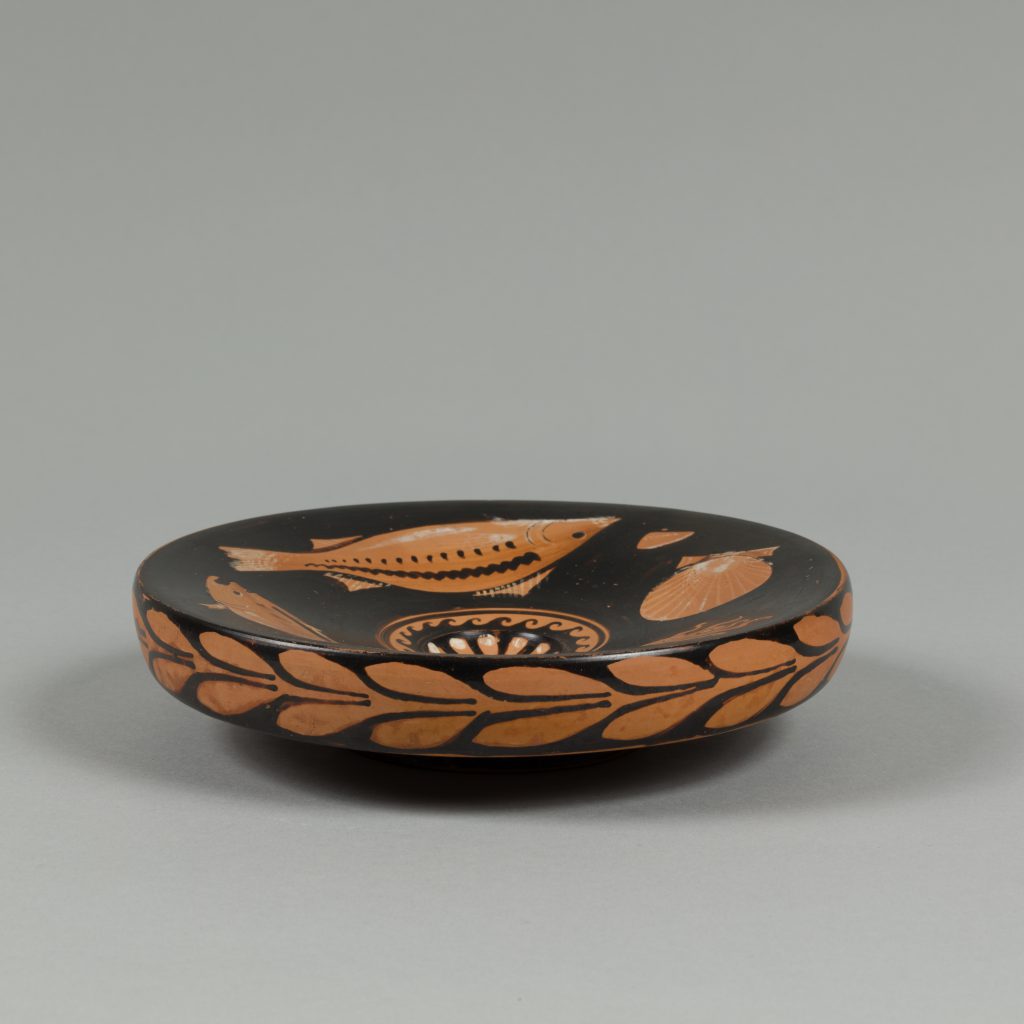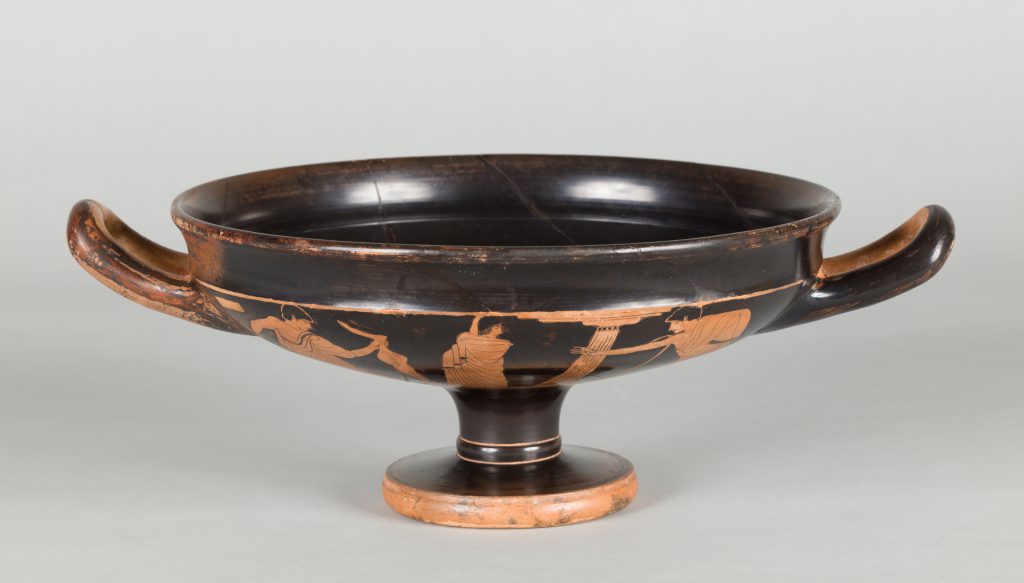
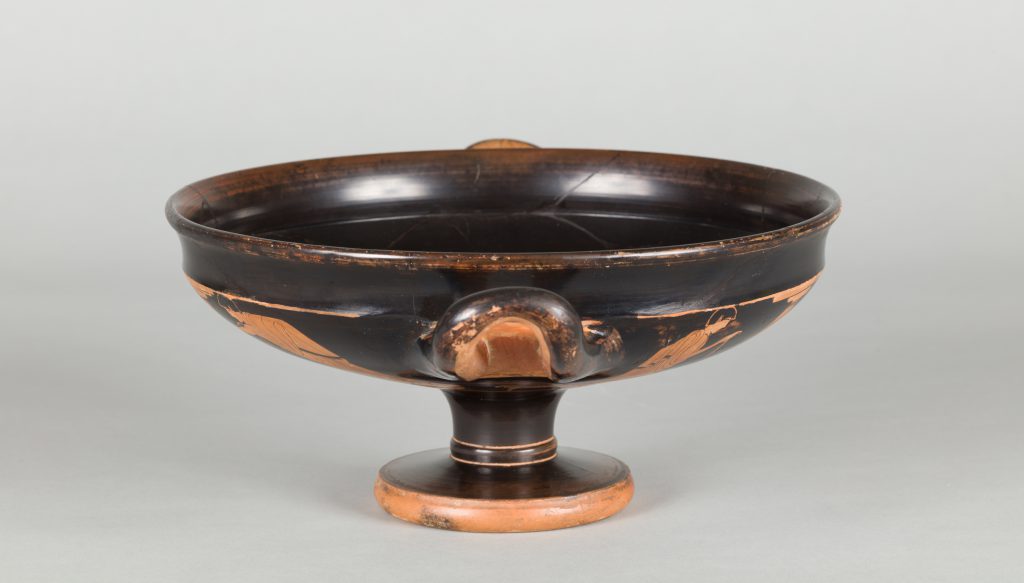
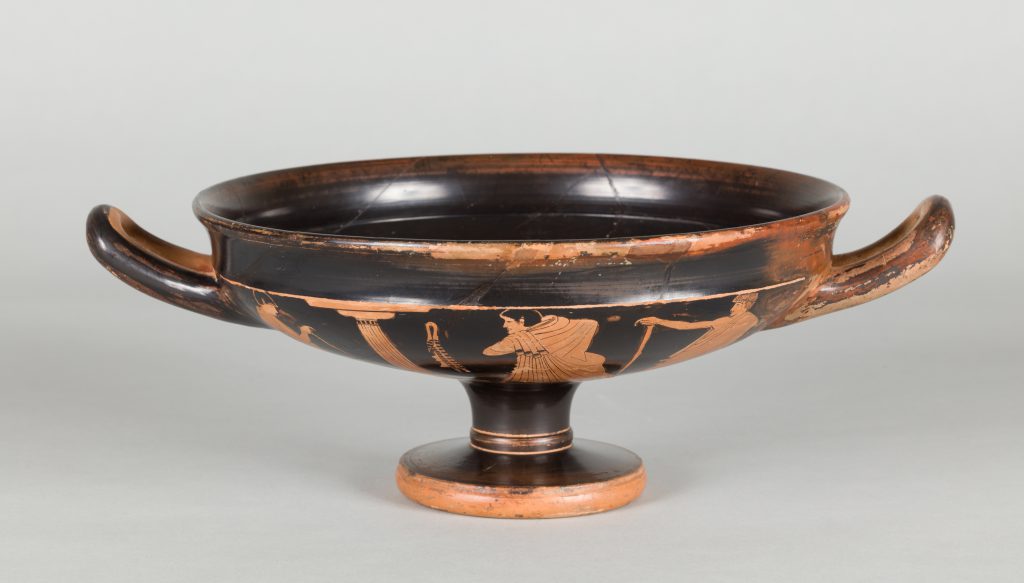
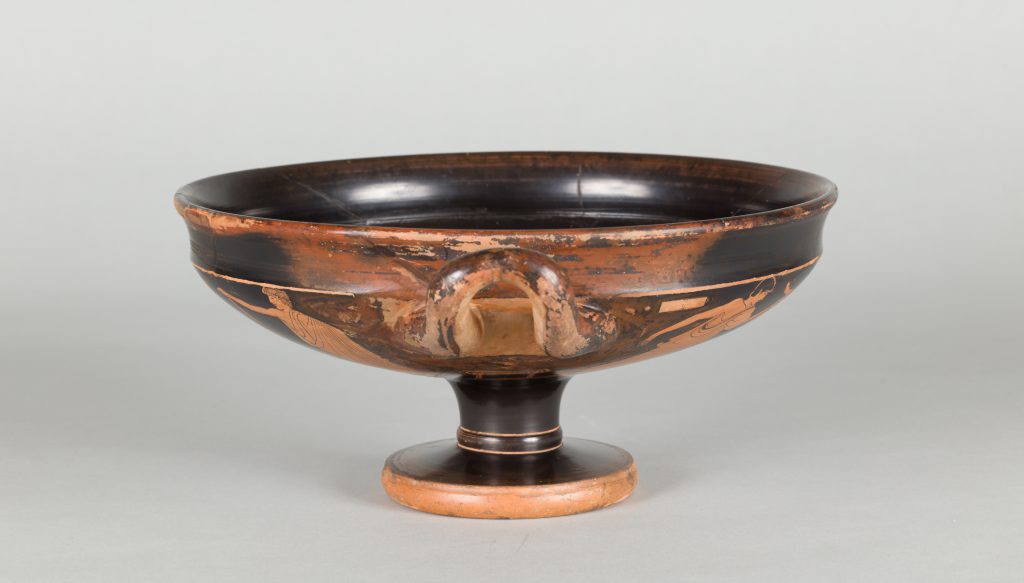
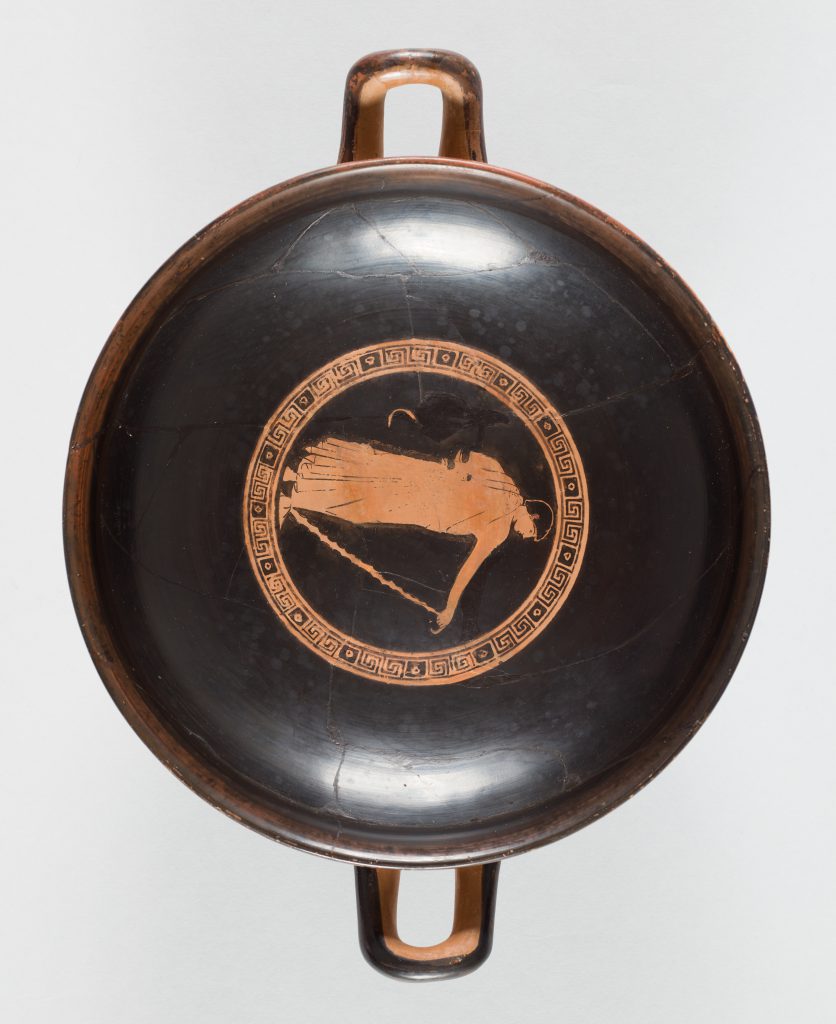

Gift of Edward Perry Warren, Esq., Honorary Degree 1926
1920.2Most of the vessels that have been attributed to the Briseis painter are red-figure kylikes, cups for symposia, with illustrations of mythological scenes or figures. The iconography of the example in the Bowdoin collection has not yet been identified, but the bowl’s exterior depicts two sets of three youthful men interacting with one other. They hold various items such as a staff and an animal’s leg, perhaps meant to be a sacrifice, with two Doric columns and one hanging flute case in the background.
The identification of this vessel as a work of the Briseis Painter is important both in providing further insights into the object itself and elevating Bowdoin’s collection by connecting it to other institutions with vases by this artist. John Beazley first identified this artist’s hand on a red-figure kylix (cup) housed in the British Museum. Because it depicts the opening of the Iliad, in which King Agamemnon takes from the hero Achilles his beloved Briseis, Beazley selected the name the Briseis Painter to become an epithet for the artist’s work.
Many vessels have since been identified as the work of this artist, including objects at the Metropolitan Museum of Art, the J. Paul Getty Museum, and the Museum of Fine Arts, Boston. Records suggest that Edward Perry Warren bought the Bowdoin red-figure kylix at Sirolo, a commune of Ancona located on the eastern coast of central Italy. Since the 1970 UNESCO convention, explicit and precise provenance has become essential in the ethical collecting of objects and museum acquisitions. Because Warren and his contemporaries were collecting in a period during which provenance was treated differently, there is often very little information about where objects were bought, thereby rendering specific purchasing details that much more important.
Before 1923, collection of Edward Perry Warren; 1923, gifted to the Bowdoin College Museum of Art by Edward Perry Warren.
Collector
A testament to his impact as an influential twentieth-century American antiquities collector, Edward Perry Warren’s (1860–1928, H ’26) name is linked to hundreds of ancient objects housed in institutions across the United States, including more than five hundred works at the Bowdoin College Museum of Art alone.
